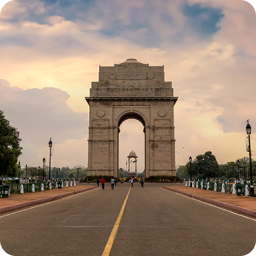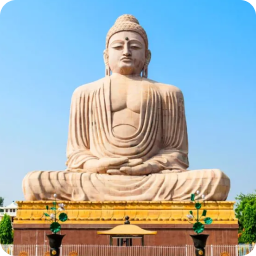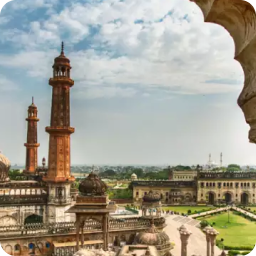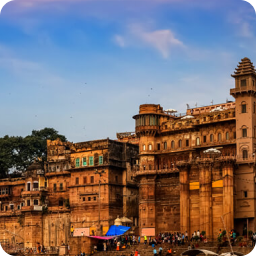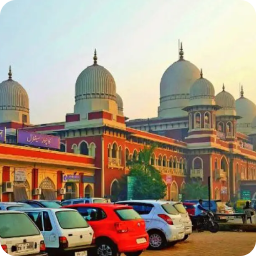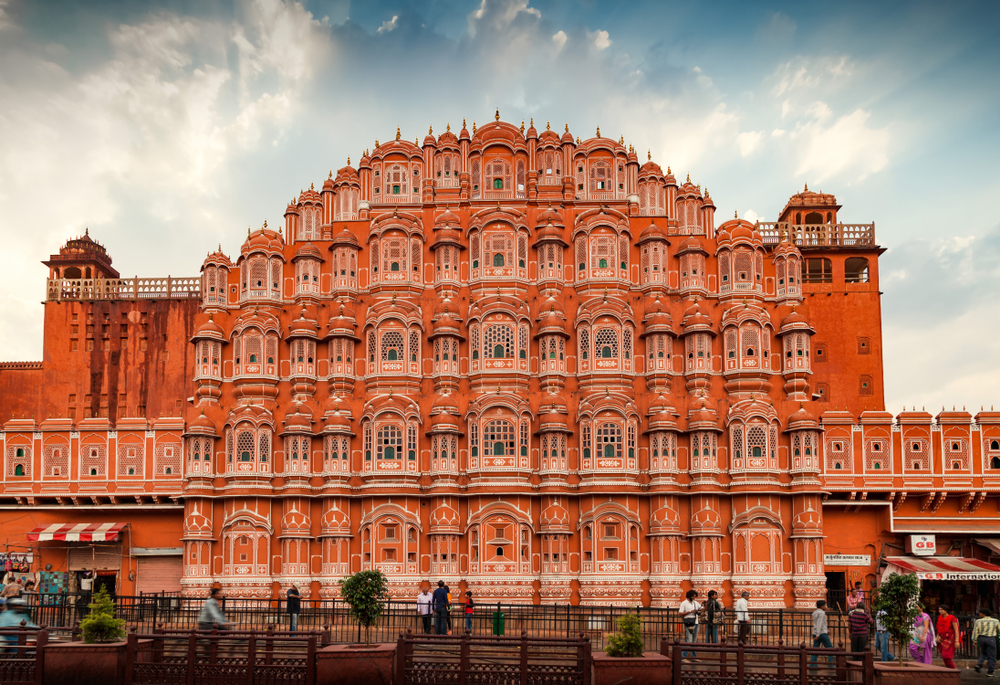Geographical Phenomenon: Volcanism, Earthquake, Tsunami |
TOPICS COVERED
- Volcanism
- Earthquake
- Tsunami
SYLLABUS FOR GS PAPER
Prelims Paper I
Indian and World Geography-Physical, Social, Economic Geography of India and the World.
Paper 2 (GS-I)
Salient features of the world’s physical geography.
Volcanism: Earth’s Cooling Mechanism
- Volcanism includes the movement of molten rock (magma) onto or toward the earth’s surface.
- A volcano is a place where gases, ashes and/or molten rock material – lava – escape to the ground.
- Pyroclastic– Denotes rock fragments or ash erupted by a volcano, especially as a hot, dense, destructive flow.
Why do they erupt?
- Volcanoes are just a natural way through which the Earth and other planets cool-off by releasing internal heat and pressure.
Volcanism: Process of Eruption
- Melting of Earth’s mantle and Magma formation
- Magma rises (Less density than surrounding rocks)
- Bubbles of gases forms inside magma (from the gas dissolved in the magma)
- Tremendous pressure of bubbles helps to bring the magma to the surface
- Eruption of magma and flow of lava after eruption
| Also Read: GEOMORPHOLOGY: EARTH’S STRUCTURE, TECTONICS, AND LANDFORMS |
Factors Leading to Volcanism
- Plate Tectonics:Convergence of two lithospheric plates (due to the converging limbs of convection cell) causing downward movement of one into the mantle
- Ocean floor spreading: The plates move apart on both sides of the ridge (due to the diverging limbs of the convection cell) and magma wells up from the mantle.
- Plate movement over a “hot spot”: Magmas can penetrate to the surface via relatively fixed “hot-spot” (We will read about it in detail ahead).
- Weak Earth Surface: Magma and gases find the opportunity to escape with great velocity through eruptions due to high internal pressure.
- A decrease in external pressure: This can trigger an eruption by minimizing the volcano’s ability to hold back the increasing pressures inside the magma chamber.
Volcanism: Classification Based on Eruption Frequency
| Active | Dormant | Extinct |
| Erupt frequently | Eruption is not regular, long interval of repose | Eruption recorded in historic times |
| Mount St Helens in US | Fujiyama (Japan) | Kilimanjaro (Eastern Africa) |
Volcanism: Classification Based on Lava Characteristics
| Basaltic Eruption | Andesitic Eruption |
| Basic Lava | Acidic Lava |
| Metallic mineral rich | Silica rich |
| Less viscous (High fluidity) | Highly viscous (Low Fluidity) |
| Slower solidification | Solidify quickly |
| Quiet eruption | Explosive eruption |
| Lava flows far and wide distance | Less flow of lava create large structures |
Volcanism: Types Based on Ejection of Materials
Volcanism: Exploring the Phenomenon of Exhalative Eruptions
- Materials discharge in the gaseous form.
- These gases may escape through vents (in the form of hot springs, geysers, fumaroles and solfataras).
- This kind of volcanism indicates the volcano is reaching its extinction.
- Associated landforms → Sinter mounds, cones of precipitated minerals and mud volcanoes.
Subaqueous Mysteries: Underwater Volcanism
- Occurs below the surface of water.
- Lava flowing over the deep ocean floor or in contact with water consolidates to produce a structure like that of a heap of pillows.
- Pillow lava of Pre-Cambrian Age are found in parts of Karnataka.
Liquid Fire: Exploring the Phenomenon of Effusive Volcanism
- Denoting igneous rocks outpoured as lava and later solidified.
- Silica poor lava (basalt) that flows through larger distances.
- Example: Deccan traps
- Columnar structure is sometimes developed in fine-grained plateau basalts.
- Columnar basalts are visible in the Deccan traps near Bombay.
Explosive Fury: The Power of Volcanic Eruptions
- This type of activity results in fragmentation and ejection of solid material through vents.
- Volcanic eject that settle out of air or water are sometimes called pyroclastic sediments.
Eruptive Volcanoes Types (Based on the typical pattern or mode of eruptions)
Hawaiian Eruption
- It involves the effusive outpouring of fluid basalt lava from craters, lava lakes or fissures.
- Because these flows are very fluid, they can travel miles from their source as lava rivers before they cool and harden.
- Little gas or tephra is produced.
- Examples: The great basalt plateaus of Columbia and Iceland.
Strombolian Eruption
- Strombolian eruptions are distinct bursts of fluid lava (usually basalt or andesite) from the mouth of a magma-filled summit conduit.
- The explosions usually occur every few minutes at regular or irregular intervals.
- The explosions of lava, which can reach heights of hundreds of meters, are caused by the bursting of large bubbles of gas, which travel upward in the magma-filled conduit until they reach the open air.
- Stromboli lies in the Lipari Islands near Italy and known as ‘lighthouse of the Mediterranean’.
Icelandic Eruption
- The Icelandic type is characterized by effusions of molten basaltic lava that flow from long, parallel fissures.
- Such outpourings often build lava plateaus.
Pilinian Eruption
- The largest and most violent of all the types of volcanic eruptions.
- They are caused by the fragmentation of gassy magma, and are usually associated with very viscous magmas (dacite and rhyolite).
- They release enormous amounts of energy and create eruption columns of gas and ash that can drift or be blown hundreds or thousands of miles away from the volcano.
- The eruption columns are usually shaped like a mushroom (similar to a nuclear explosion) or an Italian pine tree.
- Plinian eruptions are extremely destructive, and can even obliterate the entire top of a mountain, as occurred at Mount St. Helens in 1980.
Pelean or Nuée Ardente (glowing cloud) Eruption
- A large quantity of gas, dust, ash, and incandescent lava fragments are blown out of a central crater, fall back, and form tongue-like, glowing avalanches that move downslope at velocities as great as 100 miles per hour.
- Example: Occurred on the Mayon Volcano in the Philippines in 1968.
Vulcanian Eruption
- It is a short, violent, relatively small explosion of viscous magma (usually andesite).
- Vulcanian eruptions create powerful explosions.
- This type of eruption results from the fragmentation and explosion of a plug of lava in a volcanic conduit, or from the rupture of a lava dome (viscous lava that piles up over a vent).
- They produce tephra, ash clouds, and pyroclastic density currents (clouds of hot ash, gas and rock that flow almost like fluids).
- Only minor lava flows result.
- The volcano is dormant for decades or for centuries after each eruption cycle.
Volcanic Landforms: Exploring the Diverse Faces of Volcanism
| Types | Property |
| Conical Vent |
|
| Fissure vent |
|
| Shield Volcanoes |
|
| Composite Volcanoes (Stratovolcano) |
|
| Cinder Cone |
|
| Crater |
|
| Caldera |
|
| Fissure Type Flood Basalt Provinces |
|
| Mid-Ocean Ridge Volcanoes |
|
| Lava (Volcanic) dome |
|
Volcanism: Delving into Intrusive Geological Features
Intrusive landforms are formed when magma cools within the crust. Some major intrusive landforms are
- Batholith: Cooled down and solidified magma inside the Earth
- Laccolith: Large dome-shaped intrusive bodies with level base connected by a pipe-like conduit from below.
- Lapolith: Saucer shaped body concave to the sky.
- Phacolith: A wavy mass of intrusive rocks found at the base of synclines or at the top of anticline.
- Sills: Solidified horizontal lava layers inside the Earth.
- Dykes: Solidified vertical lava layers inside the Earth
Volcanism: Geysers, Fumaroles, and Hot Springs
- Surface water percolates downward through the rocks below the Earth’s surface to high-temperature regions surrounding a magma reservoir.
- This water is heated, becomes less dense, and rises back to the surface along fissures and cracks in the form of Geysers, fumaroles (also called solfataras), and hot springs.
- Geysers provide spectacular displays of underground energy suddenly unleashed.
- Fumaroles emit mixtures of steam and other gases. These are fed by conduits that pass through the water table before reaching the surface of the ground.
- Places where warm groundwater (heated by energy created by the earth) pools on the ground are called Hot Spring.
| Hot Water Spring | Geyser |
| Hot springs are springs that are produced by geothermally heated groundwater. | A geyser is a spring characterised by intermittent discharge of water ejected turbulently. The water discharge is accompanied by vapour (or steam) as well. |
| Very colourful due to the presence of cyanobacteria of different colours. | Distinct colours due to silicate deposits. |
| Found all across the world. | Found in very few regions. Iceland is famous for its geysers. |
| Example: Tattapani (Himachal Pradesh) | Example: Old faithful (USA) |
|
Examples
Old Faithful Geyser, Yellowstone National Park, Wyoming Black Growler steam vents (fumaroles), Norris Basin, Yellowstone National Park, Wyoming Mammoth Hot Springs, Yellowstone National Park, Wyoming
Hotspot Volcanism: Interior Plate Activity
- Hotspot Volcanism is somewhat different from the other types because this type of volcanism occurs not at the margins but at the interior parts of the lithospheric plates.
- Well known examples include Hawaiian Hotspot Volcanism, Yellowstone Hotspot Volcanism and Reunion Hotspot Volcanism.
Hot spot
- “Hotspot” refers to an area in the Earth’s mantle from where hot plumes rise upward through the process of convection and form volcanoes on the overlying crust
- This heat facilitates the melting of rock at the base of the lithosphere.
- The melted rock, known as magma, often pushes through cracks in the crust to form volcanoes.
- Hot-spots are relatively fixed in comparison to the plates.
Mantle plumes
- Hotspot volcanism occurs at abnormally hot centres known as the mantle plume.
- Mantle plumes = Exceptionally hot areas fixed deep below the Earth’s crust
- These mantle plumes are almost like lava lamps consisting of a rising bulging head fed by a long, narrow tail that originates from the mantle.
- As the plume head reaches the lithosphere, it spreads into a mushroom shape. These features are called diapirs.
- Melting takes place when the head of a plume encounters the base of the lithosphere resulting in formation of large volumes of basalt magma.
- The magma finds its way to the earth surface when an explosion takes place.
Hotspot volcano chain
- Due to the tectonic plate movement over the stationary hot spot, the volcanoes are rafted away and new ones form in their place resulting in the formation of a chain of volcanoes, such as the Hawaiian Islands.
Hotspot volcanic landforms
- Volcanic activity at hot spots can create submarine mountains known as seamounts.
- Hot spot seamounts that reach the surface of the water can create entire chains of islands.
- Examples
- The U.S. state of Hawaii
- Reunion islands near Madagascar
- Hot spots can also develop beneath continents
- Example = The Yellowstone hotspot, U.S.A
| Also Read: BASICS OF GEOGRAPHY |
EFFECTS OF VOLCANOES
Positive Impacts of Volcanoes: Shaping Landscapes and Resources
- Volcanism creates new landforms like islands, plateaus, volcanic mountains etc.
- The volcanic ash and dust are very fertile for farms and orchards.
- Volcanic rocks yield very fertile soil upon weathering and decomposition.
- Although steep volcano slopes prevent extensive agriculture, forestry operations on them provide valuable timber resources.
- Mineral resources, particularly metallic ores, are brought to the surface by volcanoes.
- The Kimberlite rock (source of diamonds) of South Africa is the pipe of an ancient volcano.
- Waters in the depth are heated from contact with hot magma giving rise to springs and geysers.
- The geothermal heat energy resource from the earth’s interior in areas of volcanic activity is used to generate Geothermal Electricity
- The Puga valley in Ladakh region and Manikaran (Himachal Pradesh) are promising spots in India for the generation of Geothermal Electricity.
- Geothermal potential can also be used for space heating.
- As scenic features of great beauty, attracting a heavy tourist trade, few landforms outrank volcanoes.
Destructive Impact of Volcanoes: Unleashing Nature’s Fury
Volcanism can be a greatly damaging natural disaster.
- The damage is caused by advancing lava which engulfs whole cities.
- Showers of cinders and bombs can cause damage to life.
- Violent earthquakes associated with the volcanic activity and mudflows of volcanic ash saturated by heavy rain can bury nearby places.
- Sometimes ash can precipitate under the influence of rain and completely cover whole cities.
- In coastal areas, seismic sea waves (called tsunamis in Japan) are an additional danger which are generated by submarine earth faults where volcanism is active.
Volcanic Gases: Impacts on Atmosphere and Environment
- The volcanic gases like sulfur dioxide, carbon dioxide, and hydrogen fluoride etc. pose the greatest potential hazard to people, animals, agriculture, and property.
- Locally, sulfur dioxide gas can lead to acid rain and air pollution.
- Globally, large explosive eruptions that inject high volume of sulfur aerosols into the stratosphere can lead to lower surface temperatures and promote depletion of the Earth’s ozone layer.
Volcanism in India: Barren Island and Narcondam
- There are no volcanoes in the Himalayan region or in the Indian peninsula.
- Barren Island, lying 135 km north-east of Port Blair became active again in 1991 and 1995.
- The other volcanic island in Indian territory is Narcondam, about 150 km north-east of Barren Island; it is probably extinct. Its crater wall has been completely destroyed.
Recent Major Volcanic eruptions around the world
- Mount Etna → Sicily, Italy
- Mount Sinabung → Karo plateau of North Sumatra, Indonesia
- Mayotte Island → France, Western Indian Ocean
- Mount Agung → Indonesia
- Mount Soputan → Indonesia
- Anak Krakatau island → Indonesia
| Also Read: MINERALS AND ENERGY RESOURCES OF INDIA: DISTRIBUTION, GOVERNMENT MEASURES & CHALLENGE |
Significant Volcanic Eruptions: Mt. Vesuvius, Krakatau, and Mt. Pelee
In the history of mankind perhaps the most disastrous eruptions were those of Mt. Vesuvius, Mt. Krakatau and Mt. Pelee.
Mt. Vesuviusis
- A Stratovolcano (composite volcano) in Italy.
- The city of Pompeii, located to the southwest, was buried beneath twenty feet of volcanic ashes cemented by the torrential downpours of heavy rain.
Krakatau
- Krakatau is a small volcanic island in the Sunda Straits, between Java and Sumatra.
- The explosion could be heard in Australia, almost 3,000 miles away.
- Though Krakatau itself was not inhabited and nobody was killed by the lava flows, the vibration set up enormous waves over 100 feet high which drowned 36,000 people in the coastal districts of Indonesia.
Mt. Pelee
- The eruption of Mt. Pelee of the West Indies in May 1902 was the most catastrophic of modern times.
- Pierre, the capital of Martinique, lying on the path of the lava, was completely destroyed within minutes.
- Its entire population of 30,000 was killed almost instantly.
Earthquake
An earthquake is a sudden motion or trembling in the earth caused by the abrupt release of slowly accumulated energy.
Earthquake Formation: Understanding the Release of Energy
- Earthquakes are caused due to release of energy which generates waves that travel in all directions.
- The release of energy occurs along a fault.
- A fault is a sharp break in the crustal rocks.
- Rocks along a fault tend to move in opposite directions.
- The friction locks the opposite moving rocks together as they are pressed by overlying strata. The tendency to move apart at some point of time overcomes this friction.
- As a result, the blocks get deformed and eventually slide, past one another abruptly causing release of energy.
- The energy waves travel in all directions.
- The point where the energy is released is called the focus of an earthquake, alternatively, it is called the hypocentre.
- The energy waves traveling in different directions reach the surface. The point on the surface nearest to the focus is called epicenter. It is the first one to experience the waves. It is a point directly above the focus.
- On the basis of focus, earthquakes can be classified as
- shallow focus (focus located at depth of up to 70 km)
- intermediate focus (70-300 km depth)
- deep focus earthquakes (foci depth of up to 700 km)
Shallow and Deep Focus Earthquakes
- A quake’s destructive force depends not only on its strength, but also on location and distance (depth) from the epicentre.
- Quakes can strike near the surface or deep within the Earth.
- Both shallow and deep focus earthquakes are “tectonic” earthquakes originating within the earth’s depths at various points.
- Shallow focus earthquakes occur quite frequently and at random whereas deep focus earthquakes occur every 20 to 30 years along the given fault line.
- Less energy is released during a shallow focus earthquake, while terminus energy accumulates during a deep focus earthquake.
- According to the U.S. Geological Survey, most quakes occur at shallow depths.
Shallow Earthquakes: Causes and Impacts
- These are commonly occurring “crustal earthquakes” caused by fault and movements of the continental plates.
- Generally tend to be more damaging than deeper quakes due to their focus nearer to the surface of the Earth.
- Shaking is more intense from quakes that hit close to the surface like setting off “a bomb directly under a city”.
Deep Earthquakes: Subduction and Ripple Effects
- This earthquake occurs within the subducting plate as it moves beneath the other plate.
- Deep quakes may be less damaging but they’re usually more widely felt.
- Seismic waves from deep quakes have to travel farther to the surface, losing energy along the way.
Earthquake Swarms: Insights into Subsurface Dynamics
- Series of low magnitude earthquakes occur in a localized region and over a period of time ranging from days, weeks to even months.
- Earthquakes associated with volcanic activity often occur in swarms.
- Hence earthquake swarms can serve as markers for the location of the flowing magma throughout the volcanoes.
- Himalayan swarm was attributed to low strength of the earth’s crust in the area which could not hold the tectonic energy.
Phenomenon: Seismic Waves in Earth’s Crust
- Seismic waves are produced when some form of energy stored in Earth’s crust is suddenly released.
- This happens due to the slipping of land (masses of rock straining against one another suddenly fracture and “slip”).
- These waves travel in all directions.
- Earthquake waves are basically of two types
- Body Waves
- Surface Waves
Earthquake: Body Waves
- Generated due to the release of energy at the focus.
- It move in all directions travelling through the body of the earth.
- The velocity of waves changes as they travel through materials with different densities. The denser the material, the higher is the velocity.
- Their direction also changes as they reflect or refract when coming across materials with different densities.
- There are two types of body waves. They are called P and S-waves (Discussed earlier).
P-wave or Primary wave in Earthquake
- Fastest kind of seismic wave.
- First to ‘arrive’ at a seismic station.
- Can move through solid rock and fluids.
- Velocity = Solids > Liquids > Gases
- It pushes and pulls the rock it moves through just like sound waves push and pull the air.
- Particles move in the same direction of wave propagation.
S-wave or Secondary wave in Earthquake
- Second wave felt in an earthquake.
- The S wave is slower than a P wave.
- It can only move through solid rock (not through any liquid medium).
- S waves move rock particles up and down (or side-to-side), perpendicular to the direction of wave propagation.
Surface Waves: Earthquake’s Destructive Force
- The body waves interact with the surface rocks and generate new sets of waves called surface waves.
- These waves move along the surface.
- Arrive after body waves on seismograph (Recorded last on the seismograph)
- Starts from the epicenter.
- They are low frequency, long wavelength, and transverse vibration long period waves.
- Responsible for destructive forces of the earthquakes.
- Longest distance but die out faster (Generally affect the surface of the Earth only and die out at smaller depth).
- First few small and weak swings are recorded called ‘the first preliminary tremors’ and ‘second preliminary tremors’ and then main tremors.
- There are two types of surface waves
- Love waves- zig-zag movement
- Rayleigh waves- elliptical movement
Earthquake Surface Waves: Love Wave
- It’s the fastest surface wave and moves the ground from side-to-side.
- Confined to the surface of the crust (produce entirely horizontal motion).
Earthquake Surface Waves: Rayleigh Waves
- Rayleigh waves roll along the ground just like a wave rolls across a lake or an ocean.
- Due to the rolling, it moves the ground up and down, and side-to-side in the same direction that the wave is moving.
- Most of the shaking felt from an earthquake is due to the Rayleigh wave, which can be much larger than the other waves.
Classification of Earthquakes
- Tectonic quakes caused by plate tectonics. They account for most earthquakes worldwide and usually occur at the boundaries of tectonic plates.
- Volcanic quakes are associated with active volcanism. They are generally not as powerful as tectonic quakes and often occur relatively near the surface. Consequently, they are usually only felt in the vicinity of the hypocentre.
- Collapse quakes can be triggered by such phenomena as cave-ins, mostly in karst areas or close to mining facilities, as a result of subsidence.
- Explosion quakes occur due to high-density explosions such as nuclear explosions. The occurrence of this type of earthquake is artificial in nature.
- Induced quakes are caused by human activity, like tunnel construction, filling reservoirs, and implementing geothermal or fracking projects.
Measurement of Earthquakes: Richter Scale and Mercalli Scale
The earthquake events are scaled either according to the magnitude or intensity of the shock.
- Richter scale– The magnitude scale is known as the Richter scale. The magnitude relates to the energy released during the quake. The magnitude is expressed in absolute numbers, 0-10.
- Mercalli scale– The intensity scale is named after Mercalli, an Italian seismologist. The intensity scale takes into account the visible damage caused by the event. The range of intensity scale is from 1-12.
Earthquake Prone Zones in India: Seismic Classification and Geographic Distribution
- Over 59% of India’s land area is under threat of moderate to severe
- Based on the past seismic history, the Bureau of Indian Standards divided the country into four seismic zones, Zone II, III, IV and V.
- Zone V is the most seismically active region, while zone II is the least active region.
- The zones are divided on the basis of Modified Mercalli (MM) intensity, which measures the impact of earthquakes.
- The area covered under different seismic zones include:
- Zone II
- It falls under a low intensity zone.
- It covers approximately 40% of the country.
- It comprises major parts of peninsular region and Karnataka Plateau.
- Zone III
- It falls under a moderate intensity zone.
- It covers approx 30% of the country.
- Zone IV
- It falls under a severe intensity zone.
- It covers approx 17.5% of the country.
- Zone V
- It falls under a very severe intensity zone.
- It covers approximately 11% of the country.
- It comprises the entire northeastern India, parts of Jammu and Kashmir, Himachal Pradesh, Uttarakhand, Rann of Kutch in Gujarat, part of North Bihar and Andaman & Nicobar Islands.
- Zone II
Consequences of Earthquakes: Impact on Lives, Infrastructure, and Environment
- Damage to property and infrastructure: Underground pipelines and railway lines are damaged or broken.
- Loss of lives: Duration of tremors of an earthquake is normally of only a few seconds, but thousands of people may die in this short period. More than 25,000 people died in the Gujarat earthquake of 2001. Earthquakes also cause the death of wildlife and result in a destruction of their habitat.
- Floods: Flood may result as an indirect consequence of an earthquake due to dam or levee failure.
- Changes in river courses: Sometimes river channels are blocked or their courses are changed due to the impact of the earthquake.
- They can cause submergence and emergence of landforms along coastal regions, for example the Coastline of Kutch.
- Tsunamis: Tsunamis are extremely high sea waves caused by an earthquake. It wreaks havoc on settlement of coastal areas. Tsunamis are waves generated by the tremors and not an earthquake in itself.
- Soil liquefaction: Soil liquefaction occurs when, because of the shaking, water-saturated granular material (such as sand) temporarily loses its strength and transforms from a solid to a liquid. Soil liquefaction may cause rigid structures, like buildings and bridges, to tilt or sink into the liquefied deposits.
- Cracks and fissures: Sometimes cracks and fissures develop in roads, railway tracks, and fields, making them useless. The well known San Andreas Fault formed during the earthquake of San Francisco (California).
- Landslides and Avalanches: landslides and avalanches may be triggered due to an earthquake.
- Fires: Earthquakes can cause fires by damaging electrical power or gas lines. it may also become difficult to stop the spread of a fire once it has started.
Tsunami: Characteristics and Impact
- It is a series of waves of extremely long wavelength and long period generated in a body of water by an impulsive disturbance that displaces water.
- Since they are long wavelengths, they lose very little energy along the way.
- Tsunami is a Japanese term meaning a harbor wave.
- It is also commonly known as killer waves.
Generating Tsunami Waves: Causes and Mechanisms
- A tsunami is caused by a large and sudden displacement of the ocean. This displacement caused due to
- Earthquake
- Undersea volcanoes
- Anthropogenic factors like nuclear explosions
- Landslides
- Meteors, Asteroids
Tsunami formation
Waves: Some important terminologies
Some important terminologies related to the wave
- Crest and Trough: The highest and lowest points of a wave are called the crest and trough respectively.
- Wave height: It is the vertical distance from the bottom of a trough to the top of a crest of a wave.
- Wave amplitude: It is one-half of the wave height.
- Wave period: It is the time interval between two successive wave crests or troughs.
- Wavelength: It is the horizontal distance between two successive crests.
- Wave frequency: It is the number of waves passing a given point during a one second time interval.
Motion in oceanic water
- The horizontal and vertical motions are common in ocean water bodies.
- Horizontal motion = ocean currents and waves
- Vertical motion = Tides
- Tsunamis are not the same as ocean waves.
- Most ocean waves are generated by wind whereas Tsunami have different sources (impulsive disturbance).
- Wind waves only affect the ocean surface whereas tsunamis move through the entire water column, from the ocean surface to the ocean floor.
Characteristics of Tsunami Waves in the Ocean
- Tsunamis are a series of waves of very, very long wavelengths and periods created in oceans by an impulsive disturbance.
- Tsunamis behave as shallow-water waves because of their long wavelengths.
- It travels at different speeds in water: it travels slow in shallow water that is shallow and fast in deep water.
As tsunami waves are long wavelength waves, they cannot be perceived in deep oceans (negligible amplitude when compared with their wavelength). A tsunami may be less than a foot in height on the surface of the open ocean. This is why they are not noticed by sailors. But the powerful shock wave of energy travels rapidly through the ocean as fast as a commercial jet. Once a tsunami reaches shallow water near the coast, the wave amplitude increases (conservation of energy). The top of the wave moves faster than the bottom, causing the sea to rise dramatically. The waves may occasionally reach a height of 20 to 30 metres above mean sea level.
The 2004 Indian Ocean Tsunami: Causes and Effects
- An earthquake under the Indian Ocean on 26th of December 2004 generated the Tsunami wave that had impacted the Indian Ocean Region very severely.
- Earthquake had its epicenter near the western boundary of Sumatra. The with magnitude of 9.0 on the Richter scale.
- Reason = Indian plate went under the Burma plate due to the tectonic activity
- Effect of tectonic activity
- The ocean floor was displaced by about 10-20 meters with a downward direction tilt.
- The gap that was being created by the displacement was filled by in-flow of surrounding water.
- This caused the withdrawal of the water mass from the coastlines of the landmasses in the south and Southeast Asia.
- The water mass rushed back towards the coastline as a tsunami after thrusting of the Indian plate below the Burma plate.
Tsunami Early Warning Systems: India’s Preparedness
- The prevention of Tsunami is nearly impossible but its effect can be mitigated through early warning systems.
- There are many regional and international early warning systems installed all across the globe.
- India had volunteered to join the International Tsunami Warning System after the December 2004 tsunami disaster.
- The Deep Ocean Assessment and Reporting System (DOARS) was set up in the Indian Ocean post-2004.
- Indian Tsunami Early Warning Centre (ITEWC)
- Embedded with specific systems called Deep Ocean Assessment and Reporting of Tsunamis (DART).
- It was established in 2007 at Indian National Centre for Ocean Information Sciences (INCOIS – ESSO) Hyderabad, an autonomous body under the Ministry of Earth Sciences.
- It is up and running to provide tsunami advisories for the events occurring in the global oceans.
- It has been recognized as one of the best systems in the world.
- The ITEWC includes a real-time seismic monitoring network of seventeen broadband seismic stations to detect tsunamigenic earthquakes and to provide timely warnings to the vulnerable community.
- It also receives earthquake data from all other global networks to detect earthquakes (o
- f M6.5).
| Must Read | |
| NCERT Notes For UPSC | UPSC Daily Current Affairs |
| UPSC Blogs | UPSC Daily Editorials |
| Daily Current Affairs Quiz | Daily Main Answer Writing |
| UPSC Mains Previous Year Papers | UPSC Test Series 2024 |






